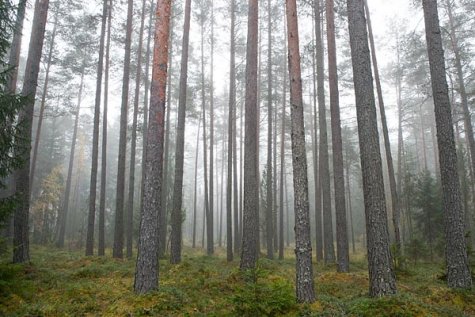Mosses stand out in forest
Photo: Arne Ader
Translation: Liis
Red-stem feather moss; Schreber's feather moss Harilik palusammal Pleurozium schreberi
All have their ”golden age” – at the moment mosses and lichens. The forest is translucent, plants on the forest floor get moisture for free, and the scanty daylight. The red-stem feather moss is probably our most familiar and often seen moss.
It is fast-growing and a little shiny. When moist, the stems are dark red, and resemble a small spruce with branches tapering at the tips.
The Estonian name “palumets” for dry boreal forests is derived from “palukas”, cowberry or lingonberry (Vaccinium vitis-idaea), and so is the name for the moss, "palusammal". Lingonberry, "palukas", is a characteristic species in the shrub layer. These are typically dry and light-rich pine forests where the soil is moderately humid – such forests make up almost 10% of Estonia’s forest area. In a ”mushroom year” it is also worthwhile to search for mushrooms there.
The tree layer or canopy of these forests is composed of common pine, spruce and silver birch (Betula pendula). The higher shrub layer contains rowan, juniper, raspberry. A lower shrub layer consists of lingonberries, blueberries and heather. The grass layer is poor in species and at present withered.
Dry boreal pine forest. Alam-Pedja









